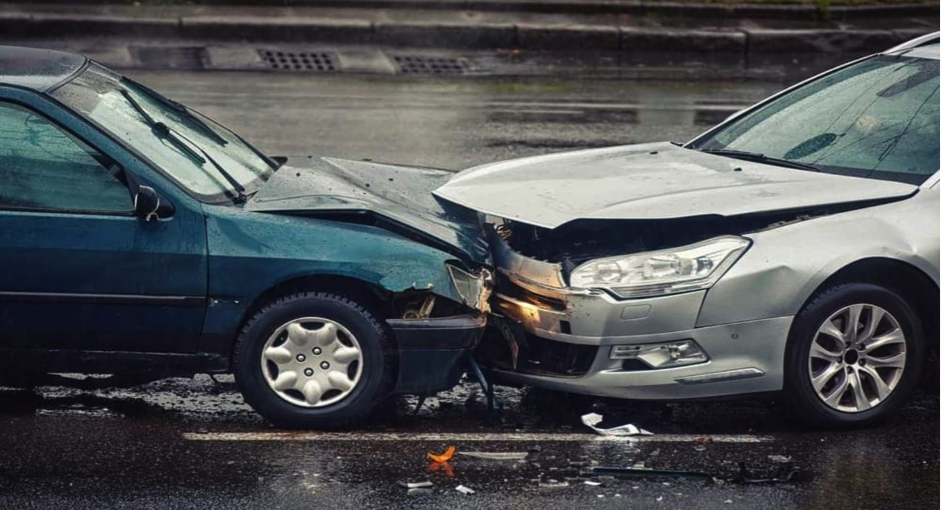
Your Health Magazine
4201 Northview Drive
Suite #102
Bowie, MD 20716
301-805-6805

More Legal and Health Articles
What Happens to the Body in a Head-On Car Accident

A head-on collision is one of the deadliest types of crashes. The forces involved put the human body through violent movements that cause severe damage. When two vehicles traveling toward each other collide, the impact is far greater than most people expect. This is why victims often face life-changing injuries and long recoveries.
What Should You Know About Head-On Collisions?
When we talk about a head-on collision, we are describing a crash where the front ends of two vehicles hit each other directly. Even at moderate speeds, the human body cannot withstand the energy released in this kind of crash. That is why lawyers who handle these cases stress both the physical and legal consequences of such accidents.
What Happens to the Body on Impact?
Even after the car stops, the body continues to move. It’s basic physics. You can only be slowed down by your airbag and seat belt. Without them, the head, limbs, and chest collide with the windshield, steering wheel, or dashboard. Even though the energies are dispersed with them, the strain is still tremendous.
The belt may slam into the chest. Legs and arms may be fractured or trapped. Adrenaline initially hides pain, but even those who leave the scene frequently experience it hours later.
Common Injuries in Head-On Crashes
Doctors see similar injury patterns after these accidents. The list includes:
- Traumatic brain injuries are caused by the head colliding with hard surfaces
- Damage to the spinal cord could result in paralysis
- Broken bones in the ribs, arms, and legs
- Internal hemorrhage from organ ruptures
- Whiplash from the neck snapping forward and back
These injuries vary in severity, but many require surgery, therapy, and long-term care. Head-on crashes account for a majority of traffic deaths in the U.S.
The Role of Seat Belts and Airbags
Although they can save lives, seat belts cannot stop all injuries. Because the belt holds the torso in place, it may bruise and break ribs. Although they buffer the impact, airbags can cause facial or arm injuries when they activate. The likelihood of mortality is decreased by safety features, yet the crash’s severity cannot be eliminated.
Why Head-On Collision Lawyers Matter?
Long recuperation periods and enormous medical bills are commonplace for victims. It’s not always easy to prove fault in a head-on collision, and insurance companies might not cover everything.
The physics of the collision, the medical aspects of the injuries, and the proof required to hold drivers responsible are all understood by attorneys who specialize in these matters. To demonstrate what actually occurred, they might also collaborate with experts in accident reconstruction.
Recovery and Long-Term Effects
Recovery from these mishaps is rarely quick. Some individuals never go back to their previous lives. Permanent movement limitations may result from spinal injury. Trauma to the brain can alter behavior, emotion, and memory. Even fractured bones can hurt for a long time. Rehabilitation is time-consuming, costly, and frequently discouraging.
The annual medical costs and lost productivity resulting from crash injuries cost Americans billions. For victims and their families who are already dealing with physical suffering, this adds still another level of stress.
Final Words
One of the riskiest situations a person might encounter is a head-on collision. Simply put, the human body is not designed to withstand that kind of force. Many survivors experience long-lasting injuries and financial strain, despite the assistance of medical treatment and safety features. At this point, attorneys play a crucial role in making sure the victims of the collision are not left to bear the burden alone.
Key Takeaways
- The body experiences massive forces in a head-on crash.
- Common injuries include brain trauma, spinal damage, and broken bones.
- Seat belts and airbags reduce but do not remove the risks.
- Victims often need legal help to secure fair compensation.
- Long-term recovery can be physically, emotionally, and financially draining.
Other Articles You May Find of Interest...
- How Life Care Planning Supports Long-Term Recovery
- Why Hire a Martinsville Auto Accident Attorney for Whiplash from a Rear-End Crash?
- Negotiating with Insurance: Tactics They Use to Deny Injury Claims
- Accused of DWI When You’re Innocent? 5 Ways to Cope With the Trauma and Protect Yourself Legally
- Ways a Catastrophic Injury Can Affect Your Life
- How Accident-Related Injuries Affect Long-Term Wellness and What Patients Should Know Early On
- What Type of Accidents Can Result in Spinal Cord Injuries?














